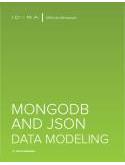
Traditionally, data modeling produces a set of structures for a Relational Database Management System (RDBMS). First, we build the Conceptual Data Model (CDM) to capture the common business language for the initiative (e.g., “What’s a Customer?”). Next, we create the Logical Data Model (LDM) using the CDM’s common business language to precisely define the business requirements (e.g., “I need to see the customer’s name and address on this report.”). Finally, in the Physical Data Model (PDM), we design these business requirements specific for a particular technology such as Oracle, Teradata, or SQL Server (e.g. “Customer Last Name is a variable length not null field with a non unique index...”). Our PDM represents the RDBMS design for an application. We then generate the Data Definition Language (DDL) from the PDM, which we can run within a RDBMS environment to create the set of tables that will store the application’s data. To summarize, we go from common business language to business requirements to design to tables.